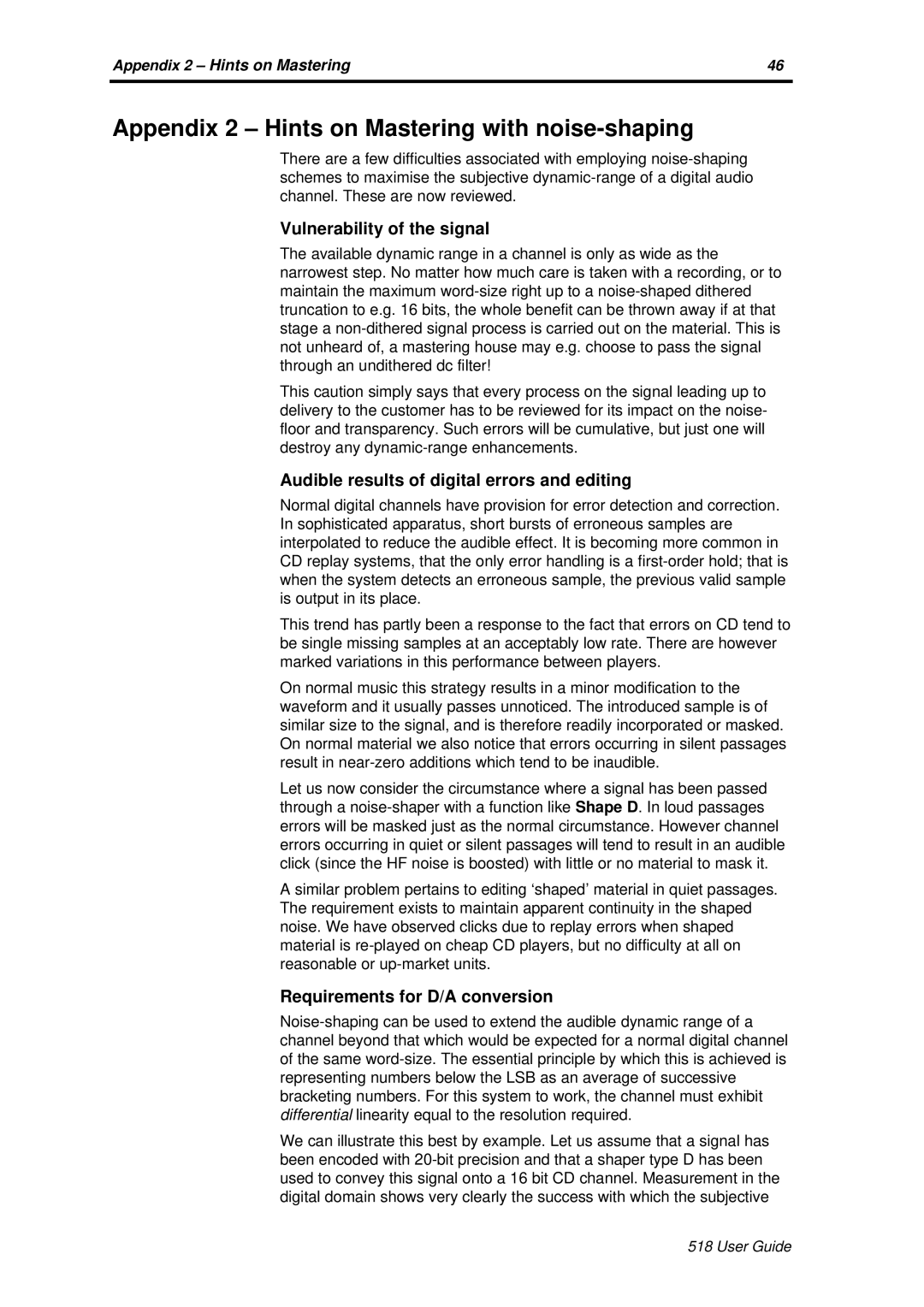Appendix 2 – Hints on Mastering | 46 |
|
|
Appendix 2 – Hints on Mastering with noise-shaping
There are a few difficulties associated with employing
Vulnerability of the signal
The available dynamic range in a channel is only as wide as the narrowest step. No matter how much care is taken with a recording, or to maintain the maximum
This caution simply says that every process on the signal leading up to delivery to the customer has to be reviewed for its impact on the noise- floor and transparency. Such errors will be cumulative, but just one will destroy any
Audible results of digital errors and editing
Normal digital channels have provision for error detection and correction. In sophisticated apparatus, short bursts of erroneous samples are interpolated to reduce the audible effect. It is becoming more common in CD replay systems, that the only error handling is a
This trend has partly been a response to the fact that errors on CD tend to be single missing samples at an acceptably low rate. There are however marked variations in this performance between players.
On normal music this strategy results in a minor modification to the waveform and it usually passes unnoticed. The introduced sample is of similar size to the signal, and is therefore readily incorporated or masked. On normal material we also notice that errors occurring in silent passages result in
Let us now consider the circumstance where a signal has been passed through a
A similar problem pertains to editing ‘shaped’ material in quiet passages. The requirement exists to maintain apparent continuity in the shaped noise. We have observed clicks due to replay errors when shaped material is
Requirements for D/A conversion
We can illustrate this best by example. Let us assume that a signal has been encoded with
518 User Guide
